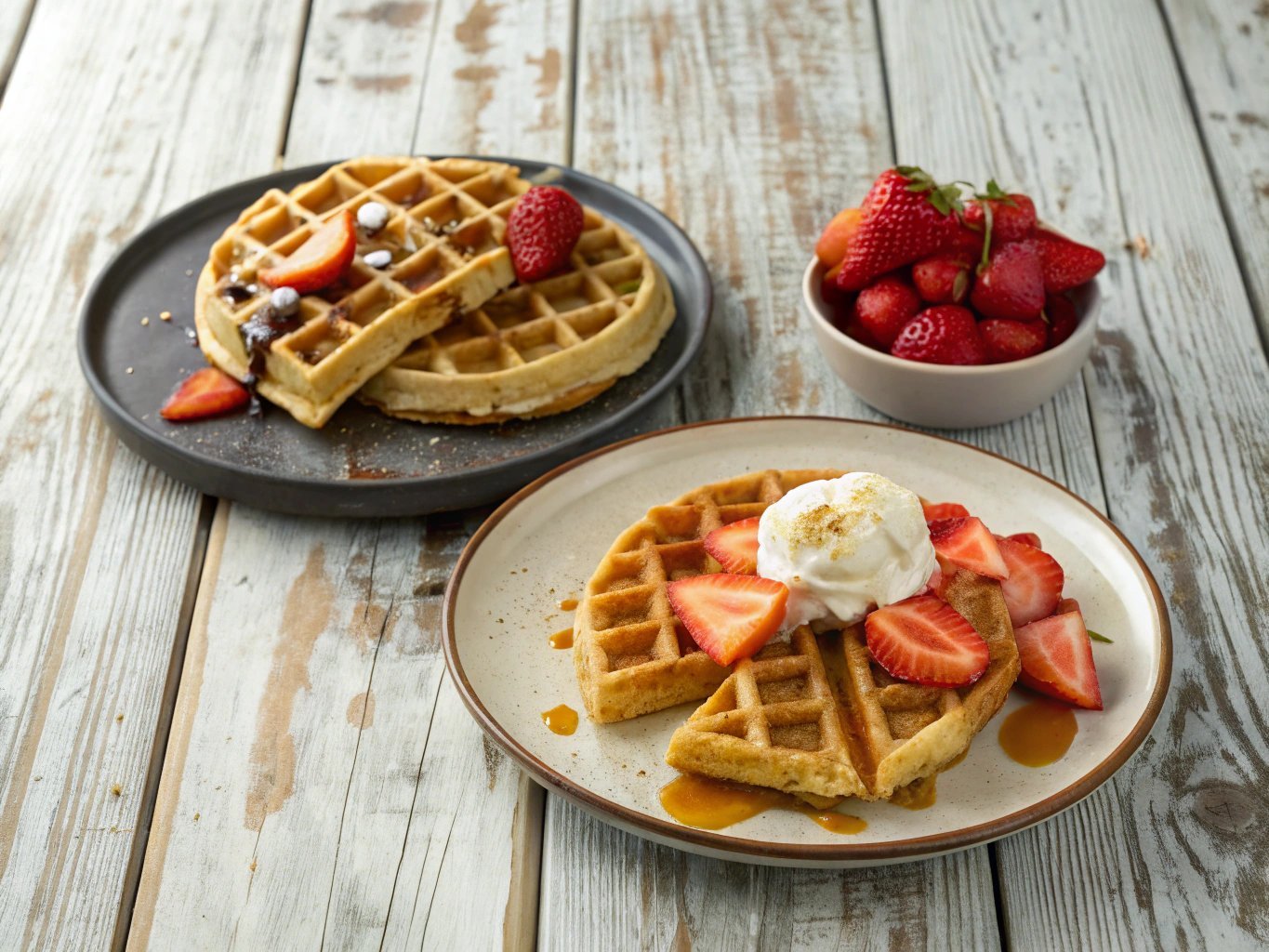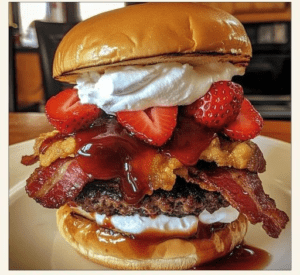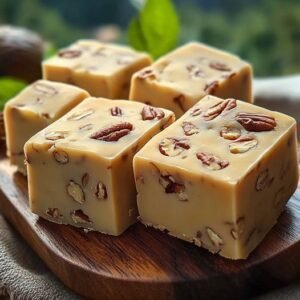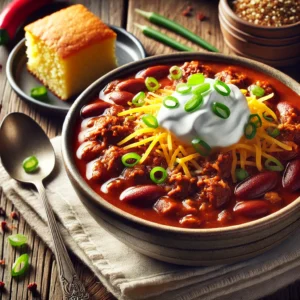What Makes Belgian Waffles Different from Regular Waffles?
Waffles are a beloved breakfast staple enjoyed around the world, but not all waffles are created equal. Among the various types, Belgian waffles stand out for their unique characteristics and delightful taste. This article explores the differences between Belgian waffles and regular waffles, highlighting their ingredients, texture, and serving styles.

The Origins of Waffles
Waffles have a long history, dating back to ancient Greece, where they were cooked over an open fire between two metal plates. However, the modern waffle as we know it today has roots in Belgium. Belgian waffles gained popularity in the United States during the 1964 New York World’s Fair, where they were introduced to American audiences. Since then, they have become a favorite breakfast item, often served in restaurants and at home.
Key Differences in Ingredients
One of the most significant differences between Belgian waffles and regular waffles lies in their ingredients.
- Batter Composition: Belgian waffles typically use a yeast-based batter, which gives them a light and airy texture. The yeast ferments, creating bubbles that expand during cooking, resulting in a fluffy interior. In contrast, regular waffles often use a baking powder batter, which is denser and produces a more cake-like texture.
- Sugar Content: Belgian waffles often contain more sugar than regular waffles, contributing to their slightly sweet flavor. This sweetness is particularly noticeable when they are served with toppings like whipped cream, fruit, or syrup.
- Eggs: The use of eggs also varies. Belgian waffle recipes may call for separated eggs, where the whites are whipped and folded into the batter. This technique adds to the lightness of the waffle. Regular waffles usually incorporate whole eggs, resulting in a denser product.
Texture and Appearance
The texture and appearance of Belgian waffles are perhaps their most distinguishing features.
- Size and Shape: Belgian waffles are generally larger and thicker than regular waffles. They often have deeper pockets, which are perfect for holding toppings like syrup, fruit, and whipped cream. Regular waffles, on the other hand, are usually smaller and flatter, with shallower pockets.
- Crispiness: Belgian waffles are known for their crispy exterior, which contrasts beautifully with their soft, fluffy interior. This texture is achieved through the use of a waffle iron that cooks the batter evenly and allows for a longer cooking time. Regular waffles can also be crispy, but they tend to be more uniform in texture throughout.
Serving Styles
The way Belgian waffles and regular waffles are served also differs significantly.
- Toppings: Belgian waffles are often served as a dessert or a special breakfast treat, topped with a variety of ingredients. Common toppings include fresh fruit, whipped cream, chocolate sauce, and even ice cream. Regular waffles are typically served with butter and syrup, making them a more straightforward breakfast option.
- Presentation: Belgian waffles are often presented in a more elaborate manner, especially in restaurants. They may be stacked high with toppings or served on a plate with artistic drizzles of sauce. Regular waffles are usually served simply, often on a plain plate.
Cultural Variations
Different cultures have their own takes on waffles, which can further influence the differences between Belgian and regular waffles. For instance, in Belgium, waffles are often enjoyed as street food, served with a variety of toppings and eaten on the go. In contrast, regular waffles are more commonly associated with home cooking and traditional breakfast settings in the United States.
Belgian Waffles Recipe
Belgian waffles are a delightful treat that can elevate any breakfast or brunch experience! Known for their deep pockets and crispy exterior, these waffles are perfect for holding syrup, whipped cream, and fresh fruits. Whether you’re serving them for a special occasion or just a cozy weekend breakfast, this recipe will have everyone coming back for seconds. Inspired by the wonderful world of cooking, you can find more delicious recipes at I WUV COOKING.
What Makes It Special
What sets Belgian waffles apart is their unique texture and flavor. The use of yeast or baking powder gives them a light and airy quality, while the deep grooves create the perfect vessel for toppings. Plus, they can be customized with various flavors, from vanilla to chocolate, making them a versatile choice for any palate.
Ingredients
To make approximately 4 servings of Belgian waffles, you will need:
- 2 cups all-purpose flour
- 2 tablespoons sugar
- 1 tablespoon baking powder
- 1/2 teaspoon salt
- 2 large eggs
- 1 3/4 cups milk
- 1/2 cup vegetable oil or melted butter
- 1 teaspoon vanilla extract
- Optional toppings: Fresh fruits, whipped cream, maple syrup, chocolate chips, or nuts.
Instructions
- Preheat the Waffle Iron: Start by preheating your Belgian waffle iron according to the manufacturer’s instructions.
- Mix Dry Ingredients: In a large mixing bowl, whisk together the flour, sugar, baking powder, and salt until well combined.
- Combine Wet Ingredients: In another bowl, beat the eggs and then add the milk, vegetable oil (or melted butter), and vanilla extract. Mix until smooth.
- Combine Mixtures: Pour the wet ingredients into the dry ingredients. Stir gently until just combined. Be careful not to overmix; a few lumps are okay!
- Cook the Waffles: Lightly grease the waffle iron with cooking spray or a brush of oil. Pour the recommended amount of batter onto the center of the preheated waffle iron (usually about 1 cup, but check your iron’s instructions). Close the lid and cook until the waffles are golden brown and crisp, about 4-5 minutes.
- Serve: Carefully remove the waffles and serve immediately with your favorite toppings.
Nutritional Information (per serving)
- Calories: 320
- Total Fat: 15g
- Saturated Fat: 2.5g
- Cholesterol: 70mg
- Sodium: 300mg
- Total Carbohydrates: 40g
- Dietary Fiber: 1g
- Sugars: 5g
- Protein: 7g
Helpful Cooking Tips
- Crispier Waffles: For extra crispy waffles, let the batter rest for about 10-15 minutes before cooking. This allows the flour to hydrate fully.
- Flavor Variations: Add a teaspoon of cinnamon or a tablespoon of cocoa powder to the dry ingredients for a flavor twist.
- Storage: Leftover waffles can be frozen. Just place them in a single layer on a baking sheet, freeze until solid, then transfer to a zip-top bag. Reheat in a toaster or oven when ready to enjoy!
In conclusion, these Belgian waffles are sure to impress your family and friends with their delightful texture and flavor. Whether you enjoy them plain or loaded with toppings, they are a versatile dish that can be enjoyed any time of the day. We’d love to hear how your waffles turned out! Don’t forget to follow us for more delicious recipes and cooking tips.

Belgian Waffles
Ingredients
- 2 cups all-purpose flour
- 1 tablespoon baking powder
- 2 teaspoons salt
- 2 tablespoons sugar
- 2 large eggs
- 2 cups milk
- 1/2 cup vegetable oil or melted butter
- 1 teaspoon vanilla extract
Instructions
- In a large mixing bowl, combine the flour, baking powder, salt, and sugar.
- In another bowl, whisk together the eggs, milk, vegetable oil (or melted butter), and vanilla extract.
- Pour the wet ingredients into the dry ingredients and mix until just combined. Do not overmix; a few lumps are okay.
- Preheat your waffle iron according to the manufacturer's instructions.
- Once heated, lightly grease the waffle iron with cooking spray or oil.
- Pour the recommended amount of batter onto the center of the waffle iron and close the lid.
- Cook until golden brown and crispy, typically about 5 minutes.
- Carefully remove the waffles and serve immediately with your favorite toppings.




Leave a Reply